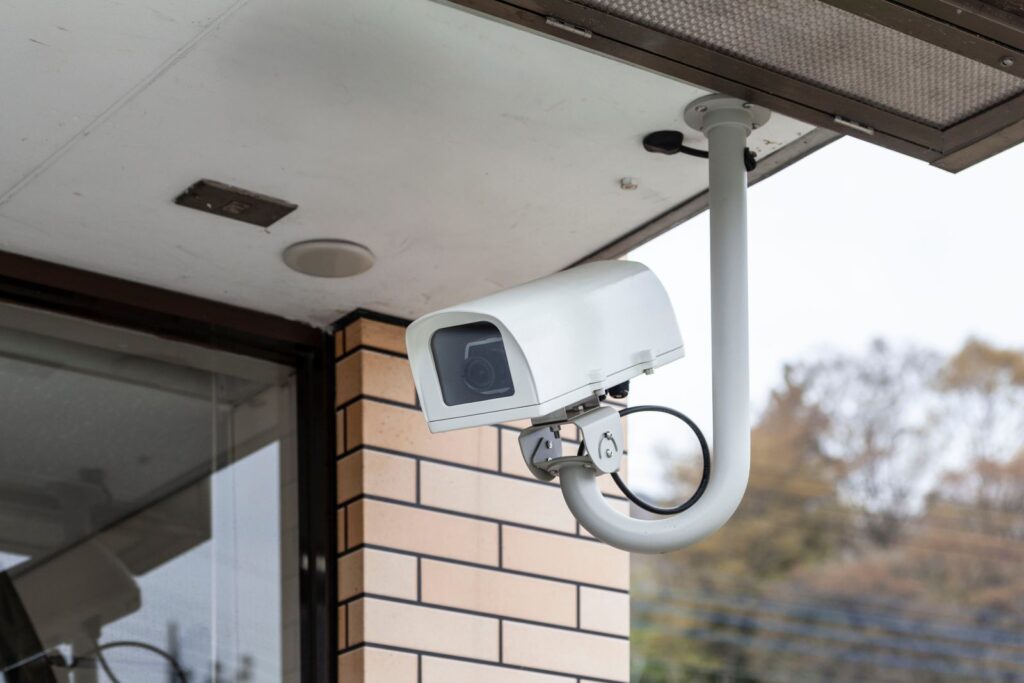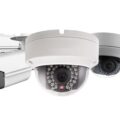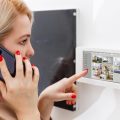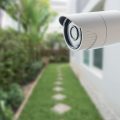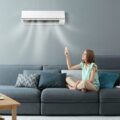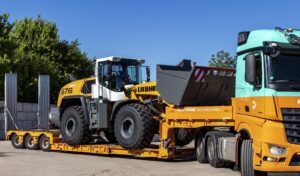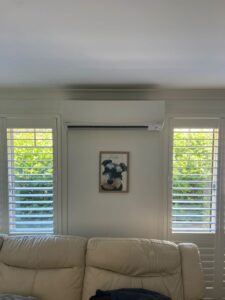Why Australian Households Need Reliable Home Security
Rising Concerns About Home Intrusions in Australia
Across Australia, householders are becoming increasingly aware of the importance of installing reliable home security systems. According to national crime statistics, home break-ins remain one of the most reported offences, with thousands of cases logged annually.
While urban centres like Sydney and Melbourne see higher volumes of burglaries due to population density, regional areas are not immune, particularly where homes are isolated or left unattended for long stretches. The growing awareness around home invasions has prompted many Australians to reassess their domestic security, especially as technology evolves to provide smarter, more efficient protection.
Protecting Property, People, and Peace of Mind
Security systems in Australian homes are no longer just about deterring intruders—they’re about protecting everything that matters. Whether it’s safeguarding your children, caring for elderly family members, or ensuring your pets are safe while you’re away, a good system offers reassurance that your household is monitored and protected.
More than a deterrent, modern security systems can directly influence home insurance policies, with many insurers offering discounts for homes equipped with certified systems. Ultimately, reliable home security is a foundation for peace of mind—knowing that you’re doing everything you can to protect your family and property.
Key Features to Look for in a Home Security System
24/7 Monitoring and Rapid Response
One of the first decisions you’ll need to make is whether to opt for a professionally monitored system or a self-monitored setup. Professionally monitored systems, commonly used across Australia, provide around-the-clock surveillance with trained staff ready to dispatch emergency services if an alert is triggered.
In contrast, self-monitored systems notify the homeowner via an app, allowing them to take action. While both options have merits, it’s the response time and reliability of professional monitoring that often provides a stronger layer of protection—especially during holidays or long workdays.
Smart Home Compatibility
Australians are rapidly embracing smart home technology, and your home security system must be compatible with popular platforms like Google Home, Amazon Alexa, or Apple HomeKit. Integration allows for seamless automation—arming your alarm via voice command, receiving real-time alerts when movement is detected, or reviewing footage remotely through your smartphone.
Smart integration not only enhances convenience but also improves the responsiveness of your system, offering you full control from anywhere in the country or abroad.
High-Resolution Cameras and Night Vision
When choosing between Australian home surveillance systems, one of the most important components to consider is the quality of your cameras. High-definition video ensures you capture clear, identifiable footage—crucial in the event of a break-in.
Many intrusions occur under the cover of darkness, which is why low-light performance and infrared night vision capabilities are key. With Australia’s diverse lighting conditions—from sun-drenched coastal suburbs to dimly lit rural properties—selecting cameras that deliver in all lighting scenarios is a smart move.
Motion Detection and Alarm Triggers
A robust alarm system relies on motion detection technology to detect suspicious movement around or inside your home. Passive Infrared (PIR) sensors are commonly used in the best home alarms for Australian households.
Artificial intelligence can further enhance these sensors to reduce false alarms—particularly useful in homes with pets or in windy areas where trees might trigger less intelligent sensors. Modern systems can fine-tune these triggers, helping you strike the right balance between security and convenience.
Types of Home Security Systems Available in Australia
Wired vs Wireless Security Systems
Australian homes come in many shapes and sizes, and the choice between wired and wireless security systems often comes down to installation flexibility and budget. Wired systems are known for stability and are ideal for homeowners planning long-term security solutions.
They’re less susceptible to signal interference but may involve more invasive installation. Wireless systems, on the other hand, are quick to set up, easy to relocate, and perfect for renters or properties with limited roof or wall cavity access. The cost difference can vary, but ongoing maintenance is often simpler with wireless models.
DIY Security Kits vs Professional Installations
DIY kits have surged in popularity across Australia thanks to their affordability and ease of use. These pre-configured systems can be installed in a matter of hours and suit smaller homes or temporary residences.
However, for larger properties or those wanting advanced features like perimeter sensors, integrated smoke alarms, or emergency buttons, professional installation remains the preferred choice. Licensed installers can offer custom advice, ensure compliance with local regulations, and provide warranties or ongoing service support—critical for rural homes or high-risk suburbs.
CCTV Systems vs Alarm-Only Setups
Not every home in Australia needs the same level of surveillance. Alarm-only systems offer strong intrusion detection but lack the visual evidence that CCTV provides. For urban households facing high foot traffic or those near public walkways, installing CCTV offers a significant advantage—both for real-time monitoring and for assisting police with investigations.
Regional homes, meanwhile, may benefit from combining alarm sensors with external cameras to monitor large properties, driveways, or sheds. The best strategy often combines the strengths of both systems for layered protection.
Best Places to Install Home Security Devices
External Entry Points to Prioritise
The most common entry points for burglars are front doors, back doors, garages, and ground-floor windows. For optimal coverage, place outdoor security cameras above doorways and ensure they have wide-angle views of paths and driveways.
Motion-triggered floodlights paired with cameras provide excellent deterrence and visibility at night. Multi-camera setups are often recommended for suburban properties in Australia, especially where landscaping or fences might block views.
Indoor Devices: Motion Sensors and Smart Hubs
Internally, focus on main thoroughfares such as hallways, open-plan living areas, and staircases. These high-traffic zones allow your system to detect intrusions early without compromising privacy in bedrooms or bathrooms. Smart hubs—often placed in communal areas—act as the command centre for your system, communicating with alarms, sensors, and cameras. Be sure to choose discreet and tamper-resistant placement to avoid disablement.
Budgeting for a Home Security System in Australia
Upfront Costs vs Ongoing Fees
Australian homeowners should be aware of the full cost landscape when investing in home security. DIY systems typically range from a few hundred dollars, while comprehensive professional systems can exceed $3,000 depending on features and coverage.
Monitored systems may charge a monthly fee—often between $30 to $70—which includes access to a control centre and mobile app. It’s also wise to budget for ongoing expenses like battery replacements, camera storage subscriptions, or annual maintenance checks.
Are Government Rebates or Discounts Available?
In some states and regions, homeowners may be eligible for rebates or insurance premium reductions when approved security systems are installed. These vary by location, insurer, and system type, so it’s worth checking with your provider and local council.
Discounts often apply if the system includes CCTV, alarm verification, or is installed by a certified technician. Not only does this help with affordability, but it also reinforces the importance of investing in professionally recognised security solutions.
How to Choose the Right System for Your Household
Assessing Your Property and Security Priorities
Before purchasing a system, assess your home’s specific risks. Larger homes may need multiple cameras and sensors, while smaller apartments might only need a doorbell camera and motion sensor.
If you have young children, elderly relatives, or pets, these will influence your choice—especially when configuring alerts or selecting pet-friendly sensors. The neighbourhood profile also matters; a quiet cul-de-sac in a regional town will have different risks than an inner-city terrace.
Questions to Ask Your Installer or Provider
When speaking with a security provider, always ask about system scalability, software updates, technical support, and warranty terms. It’s also important to confirm if the provider is licensed to install security systems in your state.
Ask whether the system includes backup battery options, what happens during a power cut, and whether the camera footage is stored locally or in the cloud. These answers will help you gauge the long-term usability and reliability of your investment.
Making a Confident Choice
Choosing the right home security system for your Australian household comes down to understanding your unique needs, the available technology, and the benefits of professional support.
Whether you live in a busy metropolitan suburb or a peaceful coastal town, investing in the right solution can help you prevent crime, protect loved ones, and gain much-needed peace of mind. With so many high-quality systems now accessible to Aussie families, there’s no better time to enhance your home’s safety and security.

